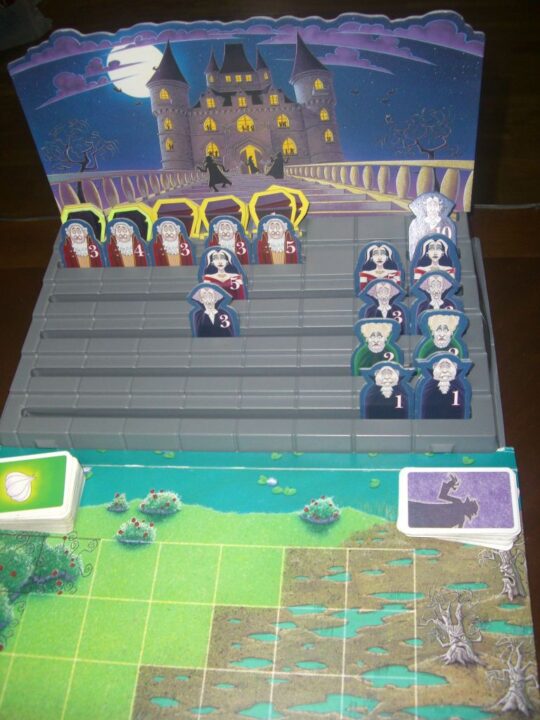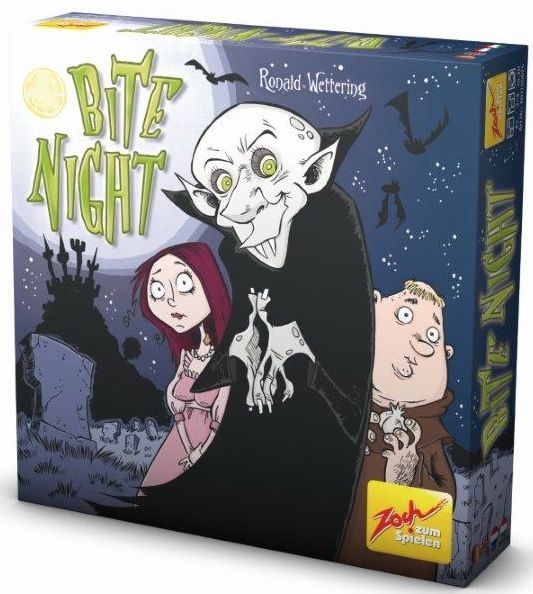Hey folks! Today, I’m reviewing the spooky and thrilling board game Vampire. Whether you’re a fan of gothic artwork, complex mechanics, or just love a good backstabbing session with friends, this game has something for everyone. Keep reading to find out why this might just become your new favorite game night centerpiece!
How It Plays
Setting up
First, lay out the game board and assemble the tokens for blood, resources, and other essentials. Each player picks a character card with a unique role like Lord, Thief, or Necromancer. Distribute the starting resources as mentioned in the rulebook. Place the day-night cycle tracker on the board; you’ll need it!
Gameplay
Players take turns performing actions like gathering resources, using special abilities, or attacking other players. The game has day and night phases, each affecting what characters can do. For instance, some abilities are more potent at night. Manage your resources wisely and form (or break) alliances.
Winning the game
To win, you must accumulate the most victory points by the end of the final night phase. Points come from various actions, like completed missions, resources gathered, and successful attacks. Keep an eye on your opponents; their success could spell your doom!
Want to know more? Read our extensive strategy guide for Vampire.
Unfolding the Mechanics and Rules of Vampire: The Board Game
Imagine drawing the perfect hand, only to have it spoiled by your friend’s wicked cackle as they unleash a sneaky card that turns the tides. Ah, that’s the joy of playing Vampire! Let’s break down the game’s mechanics and rules.
The goal in Vampire is to capture as many mortal souls as you can while maintaining your own unlife. The rules are straightforward, but the strategy? Oh boy, that’s a different beast altogether. Each player starts with a vampire character card that offers unique abilities. These abilities can be your lifeline or your doom, depending on how you use them.
One key mechanic is the night and day cycle. During the night, vampires are at their most powerful, able to perform various actions that can flip the game in their favor. When dawn arrives, the situation changes, making it crucial to plan your moves wisely. And let’s not forget the resource management aspect, where blood tokens represent your vampire’s health and power. These tokens are limited, so spending them recklessly can make you an easy target.
One gripe I have, though, is that the luck factor can sometimes overshadow strategy. Draw the wrong card at the wrong time, and you could be in for a nightmarish experience. It’s not a deal-breaker, but it does add an unpredictable element which might not sit well with everyone.
From managing blood tokens to leveraging unique vampire abilities, there’s plenty to sink your teeth into. Next up, let’s chat about how players interact and the roles they play in this fang-tastic adventure.

Player Interaction and Roles in Vampire
Ah, player interaction and the roles in Vampire – where the real bloodsucking fun begins! The game thrives on its rich player engagement, thanks to the unique roles each player adopts. You’re not just any vampire; you could be a cunning Lord, a resourceful Thief, or even the mysterious Necromancer. Each role comes with its special abilities and objectives, leading to a thrilling web of alliances and backstabbing.
Picture this: You are the Lord, commanding your minions to gather precious resources. Meanwhile, your friend unleashes their inner Thief, sneaking around and snatching those scarce goodies right from under your nose. The back-and-forth creates a fantastic tension, making every decision count. You’ll find yourself plotting and double-crossing, all while trying to achieve your vampire clan’s goals.
Trust me, the drama is real. I once had a friend who played the Necromancer and, boy, did he wreak havoc! Summoning undead minions to do his bidding disrupted everyone’s plans. This layers the game with unpredictability, keeping each session fresh and exciting. The roles ensure that no two games feel the same. So, be prepared for some friendships to be tested, all in good fun, of course.
Interaction isn’t limited to just direct confrontation; subtle strategy and negotiation also play critical roles. Convincing your buddy to spare your hide in exchange for a future favor can be just as important as any grand battle.
Get ready for the nitty-gritty details on how the game holds up in terms of balance and fairness because, let’s face it, nobody likes a game that feels rigged.
Balance and Fairness in Vampire: The Board Game
Ah, balance and fairness, the sacred tenets of any good board game. Now, when it comes to ‘Vampire,’ you’d think the bloodsuckers might have a bit of an unfair advantage, right? But no! The creators did their homework. They made sure every player, whether you’re a vampire lord or a humble villager, has a shot to win.
First off, let’s talk about resources. ‘Vampire’ uses a point system that scales well. Vampires need blood to thrive, obviously, while humans have their own resource needs to fend off the nocturnal threats. The game ensures that both sides have equal opportunities to collect and utilize their resources effectively. Vampires can hunt at night, while humans gather supplies during the day.
The day-night cycle is another great equalizer. During the day, humans can move freely and strategize, but come nightfall, it’s vampire time! This creates a natural ebb and flow that keeps both sides on their toes. One minute you’re the hunter, the next you’re the hunted. It’s balanced because it forces everyone to play their best game during their time in the spotlight.
What really stands out is the way the game handles powers and abilities. Each character, whether vampire or human, gets unique skills that can turn the tide in unexpected ways. It’s balanced because no single power is game-breaking. If you’re smart and strategic, you can outmaneuver any opponent. But beware, because a single mistake can be costly.
Alright, my fang-tastic friends, let’s sink our teeth into the next juicy section: the artwork and components of ‘Vampire’!
Immersive Artwork and Quality Components
Alright folks, let’s talk about the eye-candy that is the artwork and components of the board game Vampire. If you’re anything like me, you get giddy over the look and feel of a new game. Good news – Vampire does not disappoint!
The artwork in Vampire is dripping with gothic charm. Imagine dark forests, ancient castles, and the eerie glow of moonlit nights. The game’s design team went all out to create an atmosphere that feels like you’ve stepped into a classic vampire tale. My friends and I, we couldn’t help but pause and admire the artwork before devouring each other in gameplay. It’s that good!
Now, the components. They’re top-notch. The game comes with sturdy cards, detailed miniatures, and a game board that could double as a piece of art. The cards feature character designs that are brimming with personality. From the brooding vampire lord to the sneaky necromancer, each character leaps off the card. And those miniatures? Holy garlic! The level of detail is incredible. They’re solid, well-made, and just the right size. Didn’t have to worry about knocking them over during our heated confrontations.
One minor gripe though – the rulebook. It’s as dense as an ancient tome, and not in a cool way. We had to revisit it several times during our first game night. A bit of a bother, but nothing that spoiled the fun.
Do I recommend Vampire? Absolutely, especially if you love games with stunning artwork and quality components. Just be ready to spend a little extra time getting the hang of the rules.
Conclusion
Alright folks, that concludes my review of Vampire! It’s a spooky, thrilling ride with rich gothic artwork and dynamic player roles. Sure, the rulebook is as dense as a vampire’s lair, but the balanced gameplay and unique abilities make it worth sinking your teeth into.


